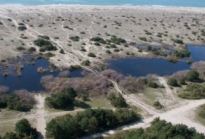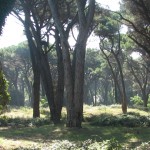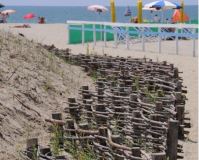Knowledge Networking Portal for Sustainable & Responsible Tourism










 Migliarino San Rossore (IT)
Migliarino San Rossore (IT)
| Contributor | DiegoNunez |
|---|---|
| Country | Italy, |
| Keywords |
|
| Release date | 26/06/2014 |
| Topics |
|
| GSTC Criteria for Destinations |
|
| Type |
|
| # | File name | Contributor | Release date | Uploaded by | Upload date | Size | Content type |
|---|
| Good Practice Innovation Sheet | ||||
    |
||||
| Items | Description | |||
| 1. WHO | ||||
| Key people and organisations (initiator, leader, partners) | Coastal and Marine Union EUCC and Ente Parco Regionale Migliarino San Rossore Massaciuccoli (Park MSRM Authority) | |||
| Key Figures | Surface | Inhabitants | Tourism arrivals | Tourism nights |
| 324 Km2 | 4,600 | N/A | N/A | |
| 2. WHY | ||||
| Reason for taking the good practice action |
1. The coastal sand dunes of Torre del Lago, in the Migliarino San Rossore Massaciuccoli Regional Park, are considered important both ecologically and recreationally. They constitute an important habitat for pioneer vegetation, endemic species and specialised fauna, and they play an important role in protecting the inland ecosystems of the Regional Park, since they connect the coastal bands to the forest of Selva Pisana, a Special Protection Area. In the last years, the encroachment of invasive plant species and the erosion caused by tourism are threatening the biological and ecological functions and values of these habitats. Therefore, dune protection and conservation have become a major concern for the local authorities that manage the park. The high influx of people visiting the park is leading to habitat loss and degradation, thus controlling tourist pressure on the dunes constitutes the main priority to decrease the negative impacts posed to these ecosystems. 2. Nowadays, protected natural areas are one of the most popular visitor attractions in tourist destinations. However, while most of the people can fully enjoy the natural settings offered by the destinations where they holiday, people with disabilities are usually faced with barriers that exclude them from visiting such places. As the majority of natural areas, the Regional Park Migliarino San Rossore Massaciuccoli had a limited accessibility for people with a disability. Making the natural resources accessible to all and adapt them to people’s different needs, was seen as a priority challenge in the park which will ultimately have a positive impact on the social and economic development of the area. |
|||
| Issues and challenge |
1. One of the major challenges when implementing measures aiming to reduce visitors’ pressure on these sites is to make tourists understand the benefits of a regulated access for the preservation of the natural environment. Information is essential in order to show them how they can behave in a responsible manner to develop a more sustainable tourism. 2. There were cultural resistances to the realization of the paths in wood in the early years due to hunting and dune free ranging people. Now, tourist questionnaires revealed a greater appreciation of visit experience and a greater understanding of the sensitivity of the environment. One of the biggest challenges faced by the park was make those places of particular naturalistic value accessible for people with disabilities without compromising the natural environment or altering the experience for other visitors. |
|||
| 3. HOW | ||||
| Methods /steps / tools used (to develop the good practice) |
1. Due to the high vulnerability of the coastal dunes and the wetlands of the back-dune habitats in the regional Park, several conservation actions were implemented as part of the „DUNETOSCA“ project, a LIFE-Nature project carried out in 2005 by the Park and Reserve Authority. In order to prevent the area from uncontrolled antrhropization, a hundred of unauthorized paths were closed and 19 wooden platforms and walkways fences were fitted on the dunes over about 4 ha. Leaflets, information panels and a website on the dune coastal ecosystem were produced aiming to increase visitors’ awareness and understanding of the importance of the protection of dune coastal habitats. Works were also undertaken aiming to prevent the spread of exotic plant species such as Yucca gloriosa and Amorpha fruticosa and to reintroduce autochthonous species. In addition, two buildings which host a significant reproductive colony of bats in Tuscany were restored, and monitoring equipment was fitted to broaden the understanding of these threatened species of Community interest. 2. Over the last years, the Migliarino San Rossore Massaciuccoli Park Authority has been committed to improve its visiting facilities ensuring that the park’s natural resources were accessible to all citizens and visitors. In 2003, and coinciding with the “Year of People with Disability” declared by the European Union, the Administration of the Park launched a programme that included a series of interventions aiming to improve the accessibility and service for handicapped. Several paths were adapted or especially designed for people with mental or physical disabilities, such as the “Chiuso di Capomadria” or “Natural Reserve of |
|||
| 4. RESULT | ||||
| Specific/measurable results, benefits |
1. The measures undertaken have led to the improvement of about 80 ha of coastal ecosystems in northern Tuscany. Native flora and fauna has recolonized the dunes and wetlands and two new habitats have been discovered and included in the Habitat Directive. The measures aiming to regulate the access in the Park have helped to reconcile tourism recreation with nature conservation. Now, people visiting the park have a number of designated walkways over the dunes and access paths to the beach that allow them to fully enjoy the area without compromising the ecological functions and values of the dune system. This has helped to manage and develop tourism in a more sustainable way. 2. The park is now easily accessible for all. The group of actions taken to increase the accessibility in the park has contributed to attract new audiences and improve the quality of experience not only for people with special needs but also for their traveling companions, parents traveling with children, elderly people and people with temporary or health-related impairments. The didactic paths created provide a multi-sensory experience for people with disabilities. They have now the opportunity to have a direct contact with nature and better explore and enjoy the natural features of the park. Visitors can "walk on water" in a swamp or admire dune environments, the Liguria sea islands and the coast from a height of 10 metres |
|||
| Recognitions (e.g. awards) |
QualityCoast Gold Award 2012-‘13 MAB Unesco Biosphere Reserve “Selva Pisana” since 2004; European Diploma of Protected Areas since 2005; 4 Natura 2000 sites (+ one proposed in sea in 2012); Panda d'Oro - WWF Award for best nature protection project in 2010. |
|||
| 5. REFLECTION | ||||
| Lessons learned |
2. - Recognise different access needs of disabled people when planning and implementing actions and measures. |
|||
| Challenges met | ||||
| Critical success factors |
1. Every action implemented helped to increase the understanding of the ecosystem dynamics and the most significant factors that contribute to the habitats’ recovery. These measures contributed to provide additional information and a continuous improvement of the ecological restoration techniques. This is the case for the techniques used to remove invasive species and re-establish native plants, and the electronic techniques used to monitor the bat population. Monitoring programmes are also decisive to study the effectiveness of this management measures. 2. Over-trampling, erosion and invasive species are the main threats of Mediterranean dune areas. The measures taken in the Migliarino San Rossore Massaciuccoli Park can be applied to other dune areas. Accessibility improvements were made at the same time than other nature conservation activities and improvements on the perceptual quality of the visitors. |
|||
| 6. MORE | ||||
| web-references, documents | www.parcosanrossore.org/en/intro, www.ampsecchedellameloria.it/ | |||














































